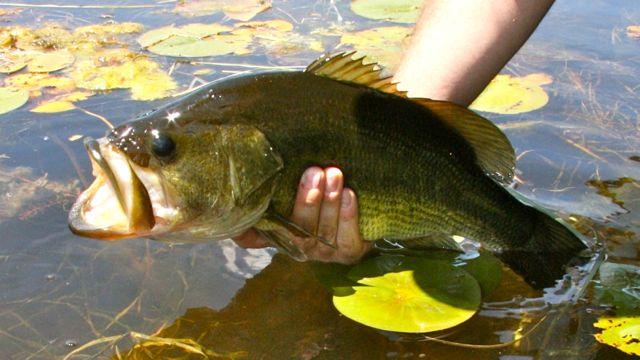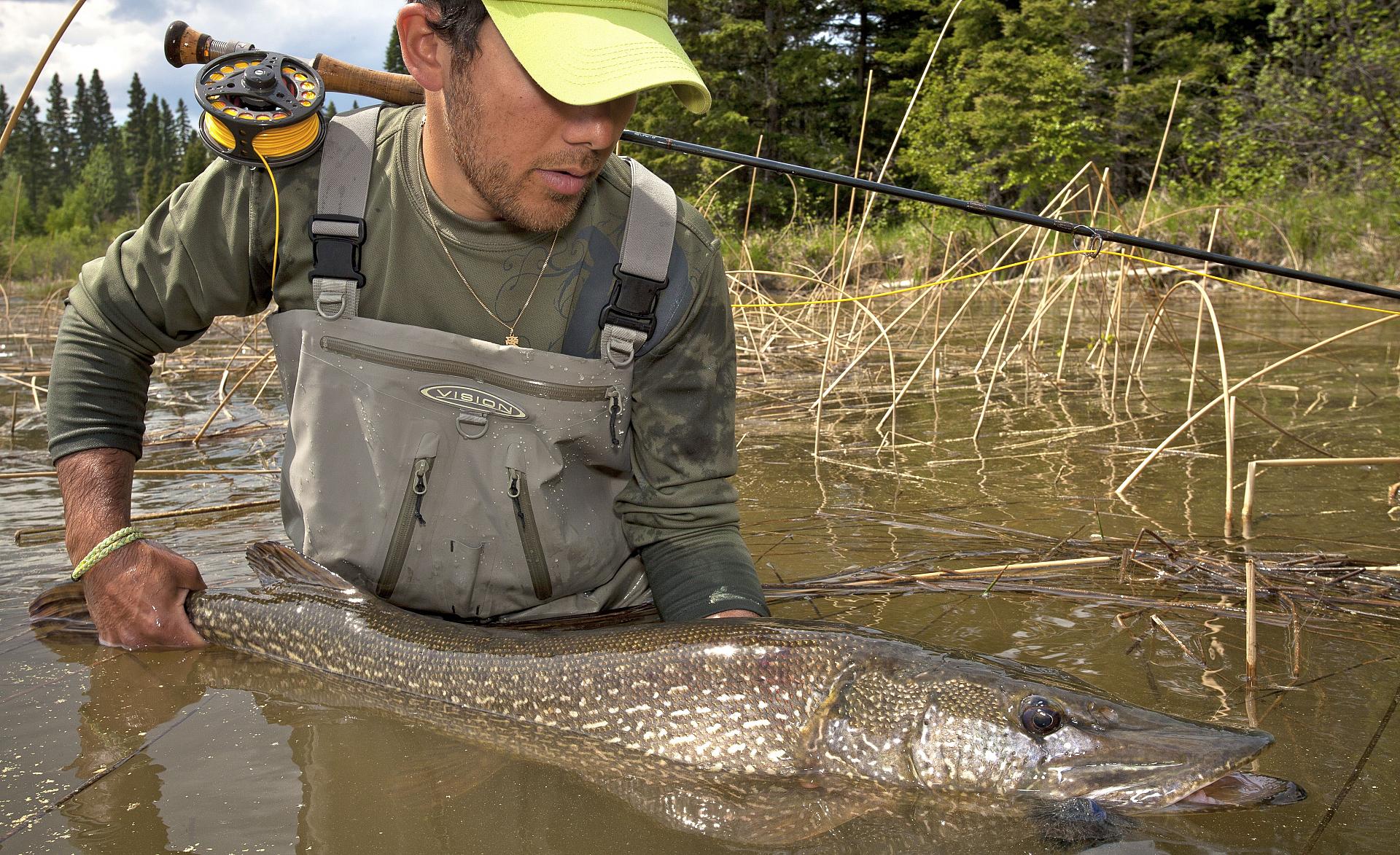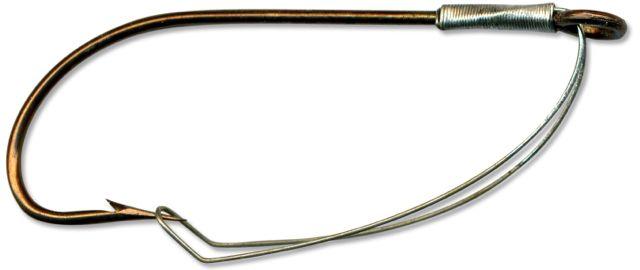Try a Fly with a Weed Guard to Avoid Snags and Hook Hidden Fish
Advertisement
Factory hooks
One option few anglers consider when tying their own weedless flies is to use factory-made weedless hooks intended for fishing bait and soft-plastics (above). These sport a light-gauge wire guard fastened to the hook eye and looped around the point, where it’s held in place by the springiness of the wire itself. To tie a fly on these hooks, just pop the weed guard off the point and it will spring out of the way. Once you’ve finished tying your fly the usual way, simply hook the wire back in place. These durable guards are great at keeping the hook free of weeds, but they don’t expose the hook as well as the loop guard when a fish bites. I use them on big streamers for pike and other fish that chomp rather than slurp.
Advertisement
No matter how well your weed guard is constructed or how well it matches the conditions, it’s likely you’ll miss a few numbskull fish that hit from the wrong angle or somehow don’t bite hard enough to strike steel. But these misses are more than offset by the number of fish you’ll catch by having the confidence to chuck your fly into the gnarliest—and fishiest—spots on the water.
Bonus tip: Fishing Weedless Flies

When using weedless flies, be gentle when you’re in the danger zone. Remember, the purpose of a weed guard is to move the fly, not the obstacle. If the fly is next to an obstruction and you jerk it, the weed guard will do its intended job: compress and expose the hook. Instead, gently coax the fly over and through obstructions. This is also a time to use knotless leaders, since every knot on your leader is something else for weeds to get snagged on. Instead of a fancy (and expensive) tapered leaders, I almost always use a simple length of eight-, 10- or 17-pound mono, depending on the size of my quarry.


